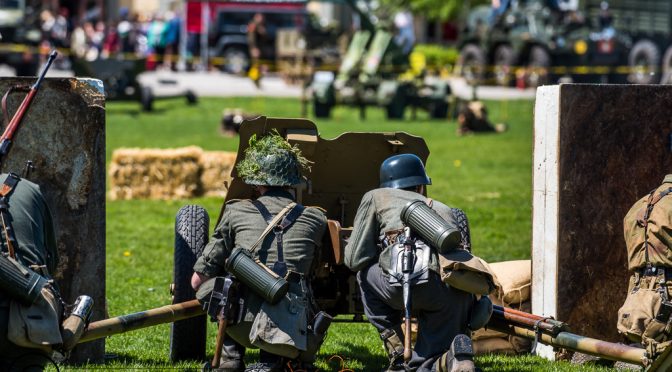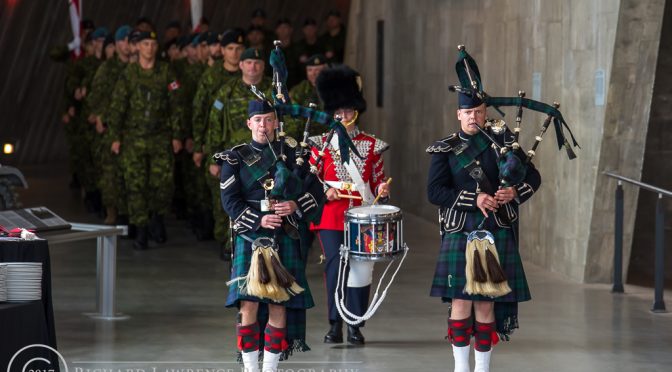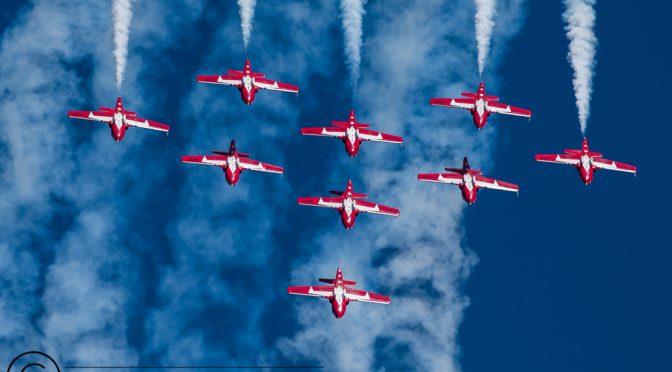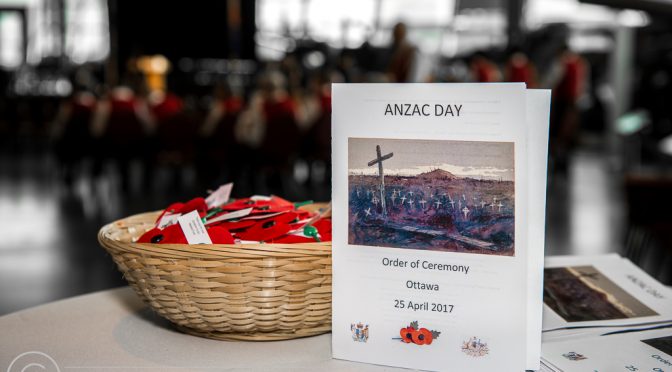The Ottawa Tulip Festival is an event which celebrates the arrival of Spring with the blooms of over a million tulips and is a sight to see but many people forget the symbology of the tulips in this case. It is actually a remembrance of the service Canada rendered to the people of the Netherlands during the WWII when Canada provided refuge to the royal family of the Netherlands (Queen Juliana and Prince Bernhard) and their daughter (Princess Beatrix) went to primary school here until the end of the war. They also remember the part that the Canadian troops played in the liberation of the Netherlands.
Now, one doesn’t normally associate the Tulip Festival with WWII battles and re-enactors but this year the Swords and Ploughshares Museum, the Perth Regiment, and the 1st Canadian Parachute Battalion, representing the Allies, proved equal to the task of defeating the German Army, represented by the Kampfgruppe Haase, in the field. On the Great Lawn at Lansdowne Park the two forces had setup camps showing both uniforms and equipment from WWII for the Saturday and Sunday of the Tulip Festival. On Saturday afternoon, they had a re-enactment of the Canadian forces liberating the Netherlands by having a battle where the tactics and weaponry of the Canadians were explained to the audience as the battle raged on. There was artillery provided by the Swords and Ploughshares Museum pounding away at the Germans who responded with their own artillery piece as well as deploying troops and vehicles to counter the Allied attack. No matter how much the Germans wanted to change history, it was not to be on this day as they slowly took too many casualties to continue and eventually surrendered to the Canadians.
In the camp, there was a good display of tents and equipment from both sides and the re-enactors were more than happy to take time out to talk to those walking by. In one display, there was a water cooled Vickers Machine Gun which has a water cooled barrel. We were told that when tea was required, someone would fire off two belts of ammunition in the direction of the Germans and that heated the water to almost boiling, which was then removed and used to make tea. On the German side there was a BMW R71 motorcycle with side car and MG-35 machine gun that was interesting as well as an MG-42 machine gun that, depending on the configuration, could fire 1200 rounds per minute (rpm) but for infantry use would shoot at about 600 rpm.
In the end, although enemies on the field, everyone left as friends looking forward to the Big Band Dance to follow in the evening.
To see all the pictures, CLICK HERE
=================================================
























